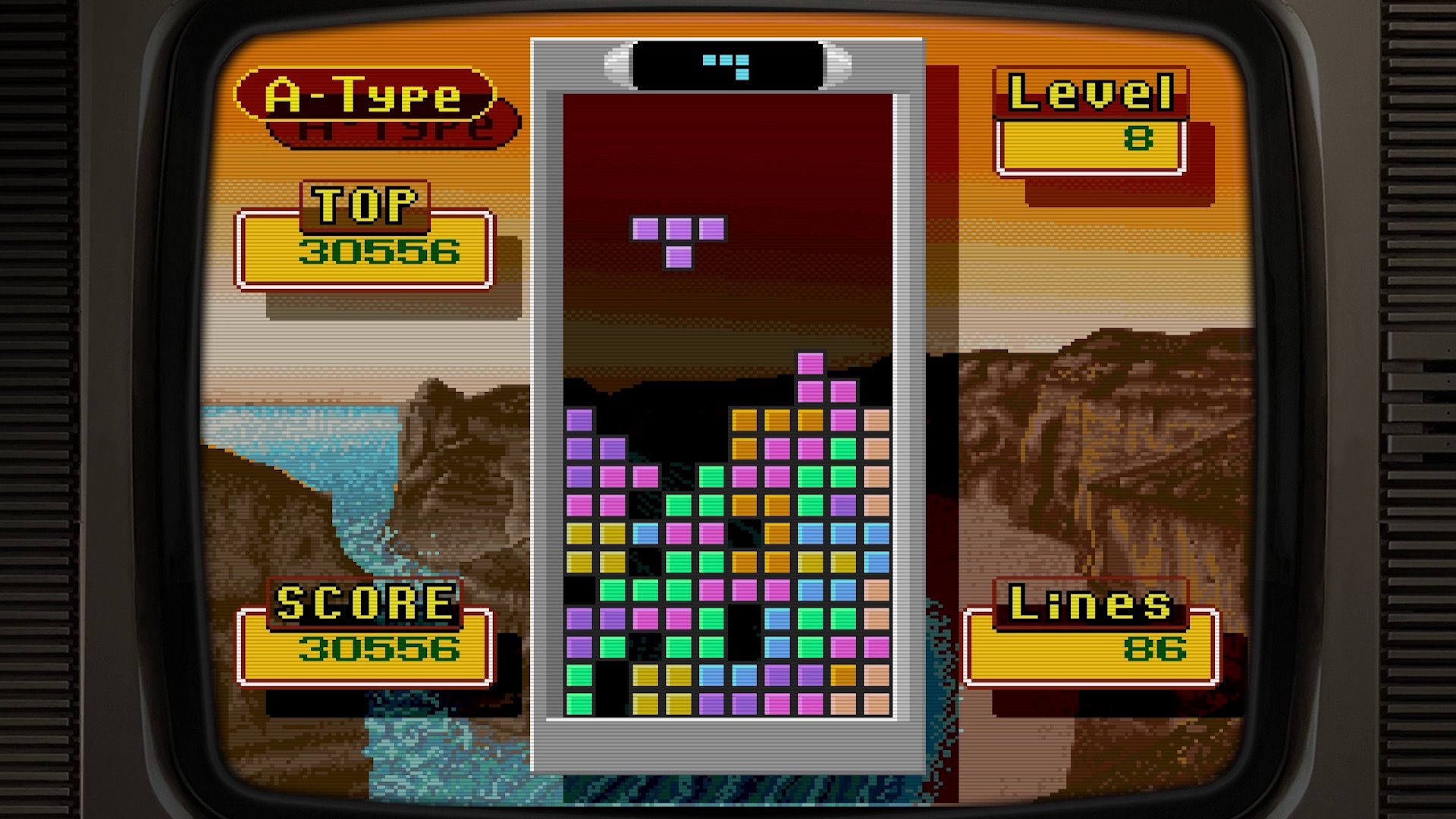Tetris is perfection. It is not merely one of the most important video games of all time, but, I would argue, one of the greatest works of anything of the past half-century. Considering the international scope of its influence, one could make the case for the game as the final major piece of Soviet art. It’s the embodiment of interactive artistic design.
Tetris posits a simple vocabulary of seven differently shaped blocks of four units each, and an even simpler grammar: Blocks fall, one unit at a time, stacking at the bottom of the screen, and vanish if you manage to fill an entire row. From this premise springs mesmerizing displays, infinite variations of symbols in motion. Over the years, there have been hundreds of different versions of Tetris released for any device with which you can play a video game, but no matter what twists in rules or variations on gameplay they throw in, the core is unchanged from what Alexey Pajitnov devised all that time ago.
This year, the Tetris Company observes the 40th anniversary of the game. In celebration, developer Digital Eclipse released Tetris Forever, a tribute game that incorporates 17 of those hundreds of versions in the third entry in its Gold Master Series, which has been testing ways to build out games as documentaries. Tetris Forever includes an interactive timeline that allows players to inspect primary documents like photos and advertising. It also includes roughly an hour and a half worth of interviews with figures like Pajitnov and his longtime friend and collaborator Henk Rogers, who was key to bringing the game to consoles like the Nintendo Entertainment System and Game Boy.
Tetris Forever struggles under some of the same constraints as those of a traditional linear documentary, most notably problems of access. Digital Eclipse clearly found terrific cooperation from the Tetris Company and Rogers’s studio Blue Planet Software, (previously Bullet-Proof Software), evident in the fact that the majority of Tetris versions included are courtesy of BPS. But there are also notable gaps. Despite how much time the game spends talking about the process by which Tetris came to platforms like the NES and Game Boy (both of which were crucial for its worldwide proliferation), neither version can be played here. There’s so much Tetris out there that a labyrinth of rights issues run around and between them — it’s difficult for a project like this to be even close to comprehensive.

Still, within its restrictions, Tetris Forever works as a documentary game because it lets each part of that descriptor inform the another. A player has complete freedom to navigate the timeline of Tetris’s development, spread, and evolution, and they can play variations of the game that allow them to viscerally understand interviewees’ explanations of how Tetrises work. There’s a remarkable recreation of Pajitnov’s original 1985 conception of the game, which, due to the vagaries of technological change, can only be played via emulators like this. You can then skip to, say, any of the releases of Bombliss, which is Tetris but with blocks that can blow up whole parts of the screen, or Hatris, a goofy 1990 variation in which you stack hats on different characters’ heads, which Pajitnov developed with his friend Vladimir Pokhilko. (One of the many stories sadly left out of this narrative is Pokhilko’s, who was the first to conduct psychological experiments on people playing the game, and who died in a murder-suicide in 1998.)
The overarching story of Tetris is distilled into the game’s new Tetris variant, Tetris Time Warp. It plays as fully traditional Tetris, except at certain moments, it will briefly shift into an earlier version, posing the player a challenge before it returns to “the modern day.” You might be transported into a game of Bombliss with the task of detonating a large bomb, or be commanded to clear two lines in the MS-DOS version of Tetris. As this newest iteration shows, Tetris is endlessly malleable and yet always recognizably itself, the gravitational center of interactive art.

Tetris Forever (2024) is available now on multiple platforms.

